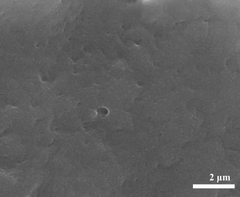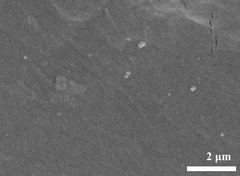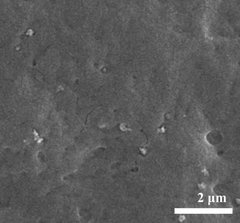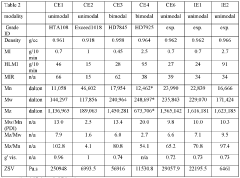How to Use HDPE in Variation‑Resistant Applications?
HDPE Background and Objectives
High-density polyethylene (HDPE) has emerged as a versatile and robust material in various industries due to its exceptional properties. Since its discovery in the 1950s, HDPE has undergone significant advancements in production techniques and applications. The evolution of HDPE technology has been driven by the increasing demand for materials that can withstand diverse environmental conditions and maintain consistent performance over time.
The primary objective in utilizing HDPE for variation-resistant applications is to leverage its inherent stability and durability while addressing the challenges posed by fluctuating external factors. These factors may include temperature variations, chemical exposure, mechanical stress, and UV radiation. By optimizing HDPE formulations and processing methods, researchers and manufacturers aim to enhance its resistance to these variables, thereby expanding its applicability in critical sectors such as construction, automotive, and packaging.
One of the key technological trends in HDPE development is the focus on improving its long-term performance under varying conditions. This involves enhancing its resistance to environmental stress cracking, thermal aging, and chemical degradation. Researchers are exploring novel additives and stabilizers that can be incorporated into HDPE to bolster its resistance to oxidation and UV-induced degradation, thus extending its service life in outdoor applications.
Another significant trend is the development of HDPE composites and blends that combine the material's inherent properties with those of other polymers or reinforcing agents. These hybrid materials aim to address specific variation-resistant requirements while maintaining the desirable characteristics of HDPE, such as its low density and excellent chemical resistance.
The pursuit of variation-resistant HDPE applications also aligns with broader industry goals of sustainability and circular economy. Efforts are being made to develop HDPE formulations that not only resist environmental variations but also facilitate easier recycling and reprocessing. This dual focus on performance and sustainability is driving innovation in HDPE technology, pushing the boundaries of its capabilities in challenging environments.
As we delve deeper into the technological landscape of HDPE in variation-resistant applications, it becomes evident that the material's future lies in tailored solutions that address specific industry needs. The ongoing research and development in this field aim to unlock new possibilities for HDPE, potentially revolutionizing its use in applications where consistency and reliability are paramount.
Market Analysis for HDPE Applications
The global market for High-Density Polyethylene (HDPE) in variation-resistant applications has shown significant growth in recent years, driven by the material's unique properties and versatility. HDPE's resistance to environmental stress cracking, excellent chemical resistance, and high impact strength make it an ideal choice for applications requiring stability under varying conditions.
In the packaging sector, HDPE has gained substantial market share, particularly in the production of rigid containers for chemicals, detergents, and personal care products. The material's ability to maintain its structural integrity under different temperature and humidity conditions has led to increased adoption in this segment. The food and beverage industry has also embraced HDPE for its variation-resistant properties, using it in milk bottles, juice containers, and food storage applications.
The construction industry represents another significant market for HDPE in variation-resistant applications. The material's durability and resistance to weathering have made it popular for outdoor furniture, playground equipment, and decking materials. HDPE pipes and fittings have seen growing demand in water supply and sewage systems due to their ability to withstand ground movement and temperature fluctuations without compromising performance.
In the automotive sector, HDPE is increasingly used in fuel tanks, fluid reservoirs, and interior components. Its resistance to chemical degradation and ability to maintain dimensional stability under varying temperatures have contributed to its adoption in these applications. The material's lightweight nature also aligns with the industry's focus on fuel efficiency and emissions reduction.
The agriculture industry has emerged as a promising market for HDPE in variation-resistant applications. The material is widely used in irrigation systems, greenhouse films, and storage containers, where it must withstand exposure to UV radiation, temperature changes, and chemical fertilizers. HDPE's resistance to these factors has led to increased use in agricultural applications, particularly in regions with challenging climatic conditions.
Geographically, North America and Europe have been the leading markets for HDPE in variation-resistant applications, driven by stringent regulations and a focus on sustainable materials. However, the Asia-Pacific region is expected to show the highest growth rate in the coming years, fueled by rapid industrialization, infrastructure development, and increasing awareness of HDPE's benefits in countries like China and India.
The market for HDPE in variation-resistant applications is expected to continue its growth trajectory, with innovations in material formulations and processing techniques further enhancing its performance characteristics. As industries increasingly prioritize durability, sustainability, and cost-effectiveness, HDPE is well-positioned to meet these demands across a wide range of applications.
HDPE Properties and Challenges
High-density polyethylene (HDPE) is a versatile thermoplastic polymer known for its excellent strength-to-density ratio, chemical resistance, and durability. However, when considering its use in variation-resistant applications, several challenges arise due to its inherent properties and behavior under different conditions.
One of the primary challenges with HDPE is its susceptibility to thermal expansion and contraction. As temperature fluctuates, HDPE can experience significant dimensional changes, which can lead to warping, distortion, or misalignment in precision applications. This thermal sensitivity can be particularly problematic in outdoor environments or in applications where temperature control is difficult to maintain.
Another property that poses challenges for variation-resistant applications is HDPE's creep behavior. Under sustained loads, HDPE can exhibit slow, continuous deformation over time. This characteristic can lead to dimensional instability and potential failure in long-term load-bearing applications, especially when precise tolerances are required.
HDPE's relatively low stiffness compared to other engineering plastics can also be a limitation in applications demanding high dimensional stability. The material's flexibility, while beneficial in some scenarios, can result in unwanted deformation under stress, compromising the integrity of precision-engineered components.
The material's surface properties present additional challenges. HDPE has a naturally low surface energy, which can make it difficult to bond, print on, or coat. This characteristic can complicate the integration of HDPE components with other materials or the application of surface treatments that might be necessary for certain variation-resistant applications.
Environmental factors also play a role in HDPE's performance. While the material has good chemical resistance overall, it can be affected by certain organic solvents and oxidizing agents. Prolonged exposure to UV radiation can lead to degradation, potentially altering the material's properties and dimensional stability over time.
Processing-related challenges are also significant when considering HDPE for precision applications. The material's high shrinkage rate during cooling can lead to warpage and dimensional inconsistencies in molded parts. Achieving tight tolerances and consistent part-to-part repeatability can be difficult without careful control of processing parameters and mold design.
Despite these challenges, HDPE remains an attractive option for many applications due to its cost-effectiveness, ease of processing, and overall performance characteristics. Addressing these limitations often requires innovative design approaches, careful material selection (such as using specialized HDPE grades), and advanced processing techniques. Engineers must carefully balance the material's properties against the specific requirements of variation-resistant applications to determine its suitability and develop strategies to mitigate potential issues.
Current HDPE Variation-Resistant Solutions
01 Polymer blending for improved properties
Blending HDPE with other polymers or additives can enhance its variation resistance. This approach can improve mechanical properties, thermal stability, and overall performance of the material. The blending process often involves careful selection of compatible materials and optimizing the mixing ratios to achieve desired characteristics.- Composition modifications for improved variation resistance: Enhancing HDPE variation resistance through composition modifications, such as incorporating specific additives or blending with other polymers. These modifications can improve the material's stability and consistency under various conditions, reducing variations in properties and performance.
- Processing techniques for enhanced stability: Implementing specialized processing techniques during HDPE production and fabrication to enhance its variation resistance. These methods may include controlled cooling rates, specific extrusion parameters, or post-processing treatments that result in more uniform and stable material properties.
- Structural modifications for improved consistency: Developing HDPE with modified molecular structures or crystalline arrangements to enhance variation resistance. This can involve controlling molecular weight distribution, branch density, or introducing specific structural elements that contribute to more consistent material behavior across different conditions.
- Surface treatments for stability enhancement: Applying surface treatments or coatings to HDPE products to improve their variation resistance. These treatments can help maintain consistent surface properties, reduce environmental effects, and enhance overall stability in various applications.
- Testing and quality control methods: Implementing advanced testing and quality control methods to ensure consistent HDPE properties and performance. This includes developing new measurement techniques, establishing rigorous quality standards, and employing statistical process control to minimize variations in HDPE products.
02 Modification of HDPE molecular structure
Altering the molecular structure of HDPE through various techniques can enhance its variation resistance. This may include controlling the degree of branching, adjusting molecular weight distribution, or introducing specific functional groups. These modifications can lead to improved mechanical properties, chemical resistance, and dimensional stability.Expand Specific Solutions03 Reinforcement with nanoparticles or fibers
Incorporating nanoparticles or fibers into HDPE can significantly improve its variation resistance. These reinforcing agents can enhance mechanical strength, thermal stability, and barrier properties. The type, size, and distribution of the reinforcing materials play crucial roles in determining the final properties of the composite.Expand Specific Solutions04 Surface treatment and coating techniques
Applying surface treatments or coatings to HDPE products can enhance their variation resistance. These techniques can improve chemical resistance, weatherability, and dimensional stability. Various methods such as plasma treatment, chemical etching, or application of specialized coatings can be employed to achieve desired surface properties.Expand Specific Solutions05 Optimized processing and manufacturing methods
Developing and implementing optimized processing and manufacturing methods can enhance the variation resistance of HDPE products. This includes controlling parameters such as temperature, pressure, and cooling rates during extrusion or molding processes. Advanced techniques like orientation, annealing, or specific cooling strategies can also be employed to improve the material's performance and consistency.Expand Specific Solutions
Key HDPE Manufacturers and Suppliers
The competitive landscape for using HDPE in variation-resistant applications is characterized by a mature market with steady growth. The industry is in a consolidation phase, with major players like Dow Global Technologies LLC, ExxonMobil Chemical Patents, Inc., and Borealis AG dominating the market. These companies have established strong technological capabilities and extensive R&D resources. The global HDPE market size is substantial, driven by increasing demand in packaging, construction, and automotive sectors. Technological maturity is high, with ongoing innovations focused on enhancing HDPE's performance in specific applications. Companies like Basell Poliolefine Italia Srl and Braskem SA are actively developing advanced HDPE formulations to improve variation resistance, indicating a competitive push towards specialized solutions in this field.
Dow Global Technologies LLC
Borealis AG
Innovative HDPE Formulations and Processes
- By introducing light stabilizers, silane cross-linking technology and melt blending technology, HDPE materials are modified to improve their UV resistance, mechanical properties, water resistance, flexibility and braidability. Specific methods include chemical grafting to firmly bind the light stabilizer to the HDPE molecular structure, enhancing the mechanical properties and waterproofness of the material through silane cross-linking technology, and improving the flexibility and impact resistance of the material through a melt blending process.
- A unimodal HDPE composition is developed with specific molecular weight ranges and distribution characteristics, achieved through controlled polymerization in a loop reactor with varying cocatalyst amounts, allowing for low MI and enhanced crystallization, thereby reducing the need for nucleating agents and simplifying the manufacturing process.
Environmental Impact of HDPE Usage
The environmental impact of HDPE usage in variation-resistant applications is a critical consideration for sustainable development and responsible manufacturing practices. HDPE, or High-Density Polyethylene, is widely used due to its durability and resistance to various environmental factors. However, its production and disposal can have significant environmental implications.
The production of HDPE involves the use of fossil fuels, primarily natural gas and petroleum. This process contributes to greenhouse gas emissions and the depletion of non-renewable resources. The energy-intensive manufacturing process also leads to air and water pollution, potentially affecting local ecosystems and human health.
Despite these concerns, HDPE's durability in variation-resistant applications can have positive environmental effects. Its resistance to weathering, chemicals, and temperature fluctuations means that HDPE products often have longer lifespans than alternatives. This longevity reduces the need for frequent replacements, potentially lowering overall resource consumption and waste generation in the long term.
Recycling plays a crucial role in mitigating the environmental impact of HDPE. The material is highly recyclable, and when properly collected and processed, it can be repurposed into new products without significant loss of quality. This circular economy approach helps to reduce the demand for virgin HDPE production and minimizes waste sent to landfills.
However, the recycling process itself is not without environmental consequences. It requires energy and resources, and not all HDPE products are easily recyclable due to contamination or complex designs. Improper disposal of HDPE can lead to pollution, particularly in marine environments where it contributes to the growing problem of plastic waste in oceans.
In variation-resistant applications, HDPE's environmental impact is closely tied to its specific use case. For instance, in water management systems, HDPE pipes can reduce water loss through leakage, contributing to water conservation efforts. In agricultural applications, HDPE's resistance to UV radiation and chemicals can lead to more efficient and less wasteful farming practices.
To minimize the environmental impact of HDPE usage, manufacturers and users should focus on several key areas. These include optimizing production processes to reduce energy consumption and emissions, designing products for easy recycling, implementing effective collection and recycling systems, and exploring bio-based alternatives that maintain HDPE's variation-resistant properties while reducing reliance on fossil fuels.
HDPE Recycling and Sustainability
HDPE recycling and sustainability are crucial aspects of the material's lifecycle, particularly in variation-resistant applications. The recycling process for HDPE involves collection, sorting, cleaning, and reprocessing into new products. This closed-loop system significantly reduces the environmental impact of HDPE production and usage.
One of the key advantages of HDPE in terms of sustainability is its high recyclability. HDPE can be recycled multiple times without significant degradation of its properties, making it an excellent choice for circular economy initiatives. This characteristic is particularly valuable in variation-resistant applications, where maintaining consistent material properties is essential.
The recycling process for HDPE typically begins with the collection of post-consumer and post-industrial waste. Advanced sorting technologies, such as near-infrared spectroscopy and flotation techniques, are employed to separate HDPE from other plastics and contaminants. Once sorted, the HDPE is cleaned, shredded, and melted before being extruded into pellets for reuse in manufacturing.
In variation-resistant applications, the use of recycled HDPE presents both opportunities and challenges. While recycled HDPE can offer cost savings and environmental benefits, ensuring consistent quality and performance can be more challenging compared to virgin material. To address this, advanced recycling technologies and quality control measures are being developed to improve the consistency of recycled HDPE.
Sustainability efforts in HDPE usage extend beyond recycling. Manufacturers are increasingly focusing on designing products for easier disassembly and recycling, known as Design for Recycling (DfR). This approach considers the entire lifecycle of HDPE products, from production to end-of-life, to maximize recyclability and minimize waste.
Furthermore, the development of bio-based HDPE from renewable resources is gaining traction as a sustainable alternative to petroleum-based HDPE. While still in its early stages, bio-based HDPE offers the potential to reduce the carbon footprint of HDPE production while maintaining the material's desirable properties for variation-resistant applications.
As sustainability becomes increasingly important in industrial and consumer markets, the ability to effectively recycle and sustainably produce HDPE for variation-resistant applications will likely become a significant competitive advantage for manufacturers. This trend is driving ongoing research and development in recycling technologies, sustainable production methods, and innovative applications for recycled HDPE in high-performance, variation-resistant products.







